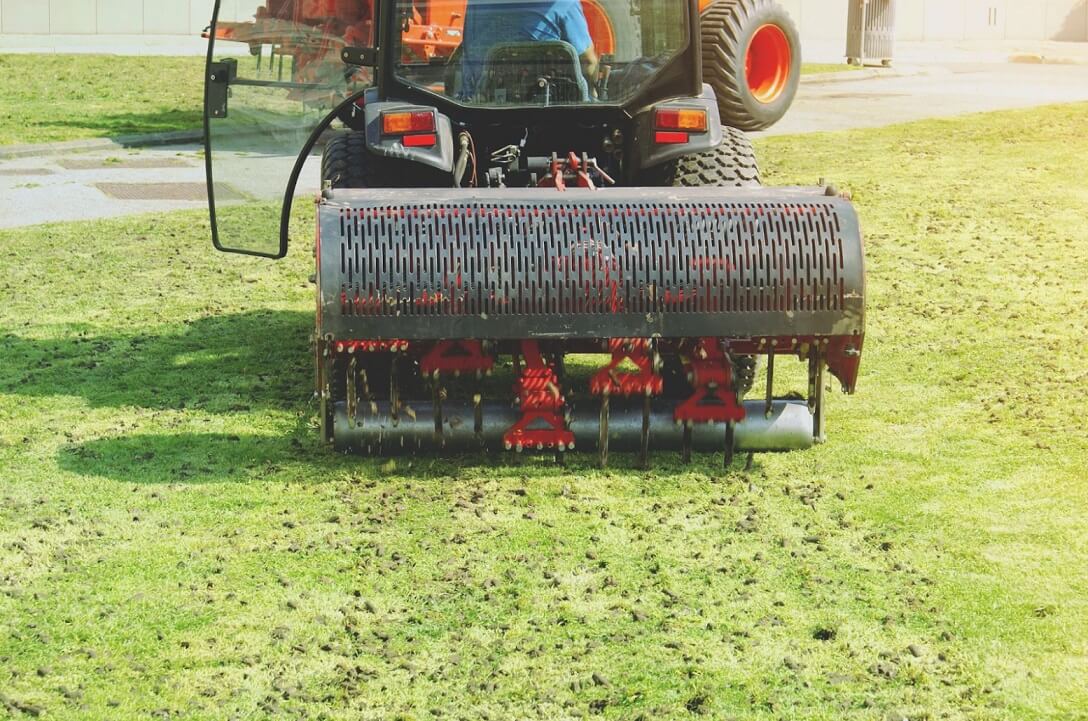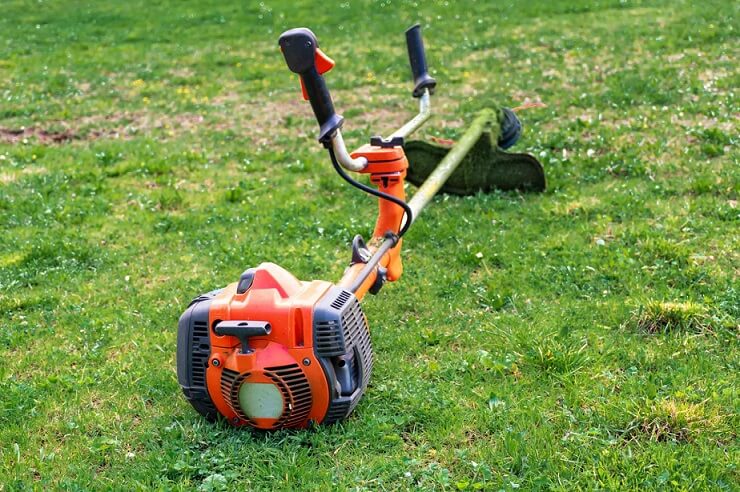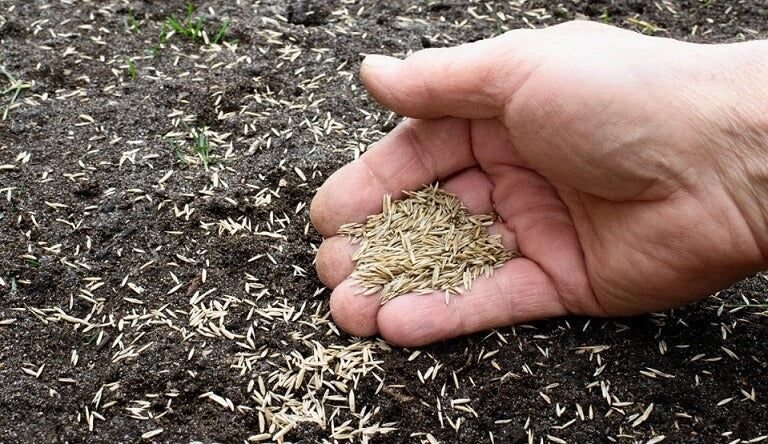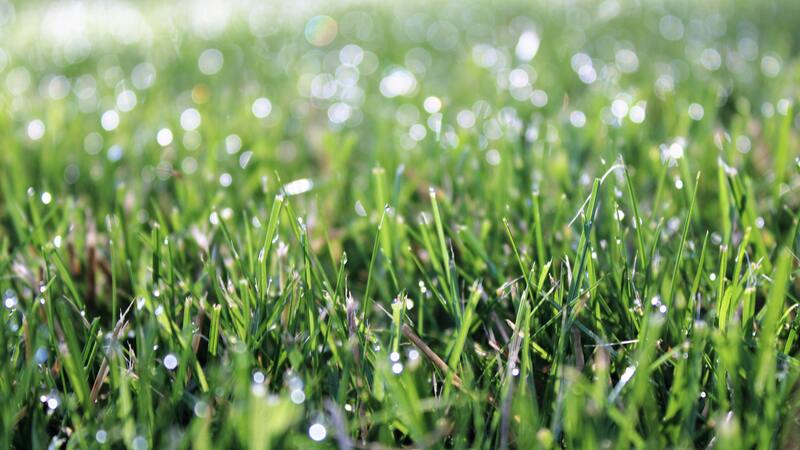When leaves change color, autumn emerges. It’s the time of the year to appreciate the vibrant colors of the beautiful season. But be careful, don’t lose yourself in the stunning scenery. Soon, you will need to give a last cut to your lawn before the first frost.
Can my lawn survive this winter? Will the grass revive in spring or totally die? How should I care my lawn in the fall? These questions could be haunting you when you look at that green space you’ve been putting so much time and effort into, which is totally understandable.
Chill out. Today, we’ve compiled a comprehensive fall lawn care guide to help you enhance your lawn, ensuring that it is resilient enough for the long, harsh winter months ahead.
The General Guide to Lawn Care in Fall
The fall season usually lasts for two to three months, starting from September in the Northern Hemisphere and March in the Southern part of the earth. The temperature and moisture slowly change during this season. Therefore, recommended fall lawn care steps might be different at different times in the fall. That said, there are general rules to follow.
1. Mow Regularly and Maintain Height
You should mow regularly throughout the fall season. The temperature drops, but it’s not that cold yet to enter the dormant state. To free you from too much labor and time, consider mowing your lawn with a robotic lawn mower.
For example, the Navimow i105 Robotic Lawn Mower is a wire-free and worry-free robot mower that can automatically map the lawn, plan the mowing path, mow at the tap of a button, and return to the charging dock when power is low or when weather changes significantly. It’s an affordable, eco-friendly, convenient, and efficient mowing option.
Most people usually keep the grass a bit longer in summer to handle the heat. If that’s the case for you, begin to gradually lower the mowing height. As for how short or long you should keep the grass at, it will depend on your grass type and personal preference.
Actually, such calculations to find out the maximum mowing height exist. Don’t want to do any math? No problem. Follow the one-third rule—never remove more than one-third of the grass blades at a time. If you have to cut more than one-third, do it in several times over several weeks to protect the roots as much as possible.
Key takeaways:
- Use a robotic lawn mower to mow regularly.
- Gradually lower the mowing height in fall.
- Follow the 1/3 mowing rule.
Alt: A Navimow i105 robotic lawn mower
2. Aerate the Soil
Fall is a nice season to spend some time outdoors. If your lawn has trees, flowers, and other plants, it will turn into this colorful resort under the fall spell, where you can spend all day with your family. However, there’s a problem you can’t neglect.
Heavy foot traffic, whether it’s farm machinery or foot traffic, will cause soil compaction, leading to water runoff and erosion, making it harder for grass to grow. That’s why aeration is vital to fall lawn care. Winter is ahead. Don’t let your lawn be vulnerable.
Aeration involves puncturing the soil with holes to allow air, water, and nutrients to penetrate down to the root zone. You can use a spike, aeration shoes, or a power aerator to finish this task.
Aeration tips:
- Slightly water the lawn to make the soil moist for easier aeration.
- Aerate once in the fall; aerate twice if your lawn is under constant foot traffic.
- Your lawn will need at least 3-4 weeks to recover from aerating; plan wisely to get everything ready before the first frost.
3. Overseed and Fertilize
Think about it. During winter, you may not be able to mow and care your lawn for weeks or months, if bad weather continues. To minimize the chance of your lawn getting thin and brown, the best prevention is to overseed and fertilize ahead of winter.
This fall, spread grass seeds evenly over the lawn surface. Then water regularly to keep the soil consistently moist until the new grass is established. Similar to seeding, spread fertilizer one or two times this season to give your lawn the necessary nutrients to grow robustly.
Understanding NPK of fertilizers:
- Nitrogen (N): Essential for green, leafy growth.
- Phosphorus (P): Supports root development (Note that many established lawns already have enough).
- Potassium (K): Helps with overall plant health, water retention, and stress tolerance.
4. Adjust Watering
In early fall, the weather is still warm, and the grass grows quite fast. During this time, keep the lawn hydrated, ensuring it gets at least 1 inch of water per week. Of course, you can skip a few waterings if there’s rainfall. And, if you’ve just finished seeding or fertilizing, the lawn could use a bit more water to dissolve the particles into the soil.
On the other hand, when it comes to late fall, the grass growth slows down. That means your lawn doesn’t need less water than before. So, reduce watering gradually.
Attention:
If you want to encourage deep root growth, water your lawn infrequently but for a longer duration to moisten the soil 6 to 8 inches down.
5. Control Weeds
As long as the grass continues to grow, weeds will grow. Even if weed growth slows down when the temperature drops low, it’s important to stay vigilant.
Keep an eye on your lawn, and once you spot signs of weed growth, pull them off your lawn. Additionally, apply pre-emergent herbicides in early fall to prevent weeds from sprouting, relieving you from too much worry.
Recommended organic control:
- Pull boiling water directly on weeds to kill them.
- Spray a mix of vinegar, salt, and dish soap on weeds to dry them out.
6. Remove Leaves
All the fall lawn care steps mentioned above can also be applied to other seasons, with different timing, frequency, and proportion. But there is one thing that you should do in fall and can’t do in other seasons—removing leaves.
Bet your lawn has more than one tree. Trees are a great complement to a green lawn. They improve the overall look of your lawn, provide shade, and offer other benefits. The only issue with trees is that they create debris on the lawn in fall. Worse, leaves don’t completely fall in one day. So, unfortunately, you need to rake or blow them away from time to time to prevent them from smothering the grass.
To deal with fallen leaves:
- Spread them in garden beds or other planting areas to suppress weeds and retain moisture.
- Collect them and leave them to decompose naturally into a rich leaf mold as fertilizer.
Tips to Repair Summer-Damaged Grass in Fall
Assuming your lawn is in good condition when summer ends, following the general fall lawn care guide should improve your lawn’s health for the winter ahead.
Wait. Your lawn has been damaged after a stressful summer? Don’t worry. We saw it coming. Here are things you can try to repair a dry and damaged lawn.
1. Prepare the Area
First, water the lawn the day before you plan to work on it and wait for it to dry.
Second, clear away any dead grass, weeds, rocks, and any debris. Dethatch your lawn to thoroughly remove dead grass if necessary.
If the grass is too long, you can mow the lawn at a raised height to avoid stressing the grass. If the grass is not too long to affect other lawn care tasks, postpone the mowing session.
2. Seed and Fertilize
If you notice bare patches or thinning grass, reseeding and fertilizing are crucial fall lawn care steps.
First of all, check if the soil is suitable for seeding or fertilizing. Aerate or rake the soil to loosen it. Then, broadcast a slow-release fertilizer that is rich in both nitrogen and potassium across the affected areas. Next, spread seeds evenly over the loosened soil. And lightly rake the soil again to ensure the seeds have good contact with the soil. Finally, water the newly seeded areas daily to keep the soil consistently moist until new seeds sprout.
3. Water and Maintain
Under normal conditions, you just need to water weekly in fall. For summer-damaged lawns, weekly watering is not enough for recovery.
Water daily or even a few times a day if you have seeded the lawn. Moreover, deep watering is recommended to encourage deep root growth. You may double the amount of water if the soil is considered too dry. When you notice that the wilting, brown patches are fading away, reduce watering frequency accordingly.
FAQ on Lawn Care in Fall
Is it better to keep grass long or short in fall?
In early fall, you may keep the grass at a height based on the grass type and your preference. In late fall, when the temperature gets lower, grass growth slows down, and it’s better to keep the grass a bit shorter this time.
How to know if your lawn has suffered from heat stress?
If you notice brown patches, wilting or thinning grass, and soil areas that remain dry despite watering, your lawn has suffered from heat stress in summer. Water the soil deeply first to prepare for reseeding and fertilizing.
Should you leave grass clippings on your lawn in autumn?
Yes, if you want to have a lush, healthy lawn, leave the grass clippings where they fall. If your mower doesn’t support mulching, apply fertilizer instead.
When should you give your lawn a final cut for winter?
When the weather stays cold consistently at about 5℃ (41℉) or lower and when leaves begin to fall, you should give your lawn a final cut for the winter season. Don’t wait for the first frost.
To Sum Up
A successful fall lawn care plan includes proper and timely seeding, watering, fertilizing and cleaning to build a strong root system and prepare for winter. No matter what your lawn condition is, by following these fall lawn care steps consistently, your lawn will regain its strong resilience or grow more robust in no time.
More Blog
Should You Aerate Your Lawn in Spring
Planning to aerate your lawn this season, but unsure because of the mixed views on spring aeration? Many homeowners face the same confusion. Some say spring works fine, while others warn against it, which makes the decision harder than it...
Should I Cut Grass Short for Winter: The Expert Tips 2025
As winter approaches, many homeowners begin to wonder about the best practices for maintaining their lawns. One common question that arises is whether to cut the grass short before the cold weather sets in. Well, the answer may vary due...
How Long to Water New Grass Seed
Planted or planning to plant new seeds? You might have heard that new grass needs more care and water than an established lawn. The most common confusion is how long to water it so it grows well. Your concern makes...
When to Stop Mowing Your Lawn Before Winter?
As the weather gets colder, it’s time to prepare for the long winter season. While you’re preparing a good stock of food and remedies and weather-proofing your pets, don’t forget to adjust your lawn care routine, including when to stop...
How Often to Water Grass Seed?
You spread grass seed evenly and waited for a lush green lawn, but witnessed patchy sprouts. This usually happens not because the seed was poor, but because the soil surface dried out at the wrong time. If a seed once...
Can You Cut Wet Grass? Is it Safe?
Beginners and new lawn owners often ask if they can cut wet grass. It’s something that confuses many people, and yet, they are unable to decide. But not after reading this article. We will help you understand the issues of...






Share: